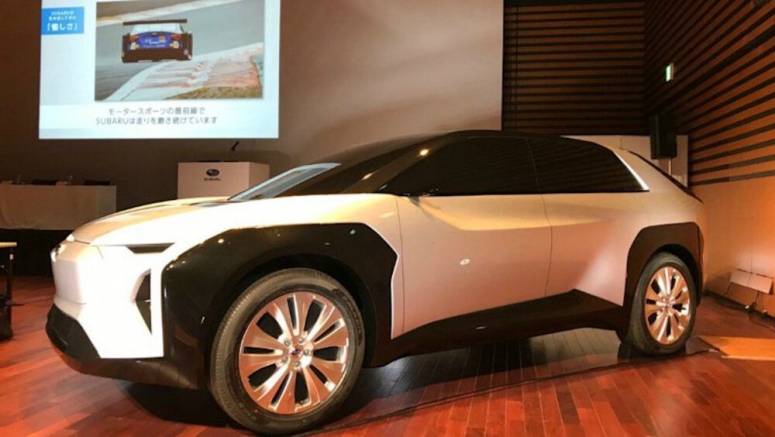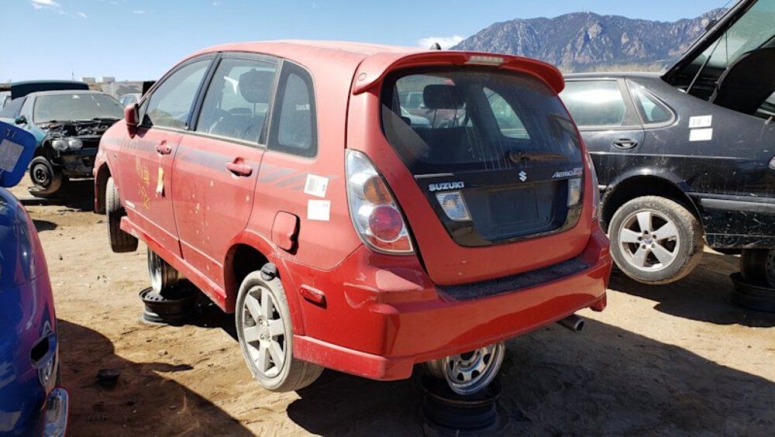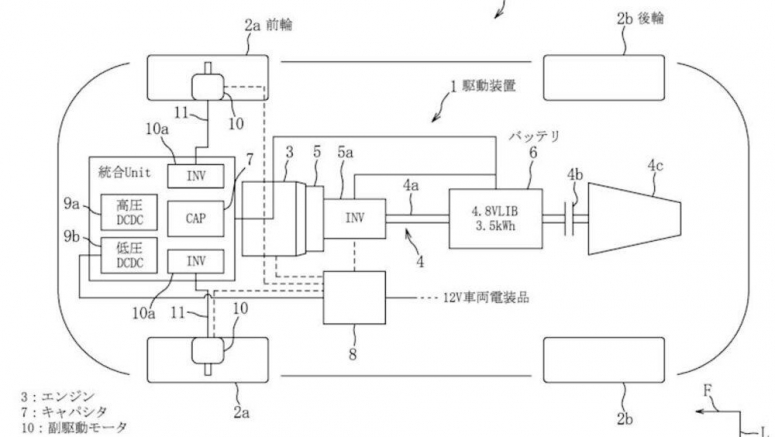2020 Lexus Gs Black Line Special Edition Heading To U.s. Dealers This Summer

Lexus' challenger to Germany’s BMW 5-Series and Mercedes-Benz E-Class executive sedans, the GS, has received a new limited edition.

Lexus' challenger to Germany’s BMW 5-Series and Mercedes-Benz E-Class executive sedans, the GS, has received a new limited edition.

There is something eerie about driving concept cars. It's not that they're priceless one-offs, painstakingly created by a host of craftspeople. And it's not that they're champingly bridled, powered by a full battery array, yet only able to be driven at 5 mph for safety's sake. And it's not that it's illegal to drive them on public roads, especially in Japan, so you're forced to conduct yourself in an abandoned-looking bay-front industrial parking lot. It's creepy because moving around in a vehicle that is, at heart, nothing but a fantasy, lends credence to the underlying delusion, makes such a car seem possible, real. Driving a concept car backfills the uncanny valley.
This is especially true if the concept in question is a Mercedes-EQ sedan, an elegantly ovoid, full-size, battery-powered, ultra-luxury four-door. Mercedes has not made any secret of the fact that it plans to grow its all-electric EQ sub-brand to include an entire vehicle line. And one of them must necessarily be an S-Class-like sedan, a marque signature for decades. In fact, the brand has officially stated that it will sell an all-electric vehicle very much like the Vision EQS Concept, alongside a new gasoline- or hybrid-powered S-Class, starting in the early 2020s.

Update: Toyota told CarScoops that they will present the new B-SUV on April 23. “Indeed we will unveil this vehicle on 23rd April, in a digital way”, said a spokesperson.

It feels like yesterday when the Nissan GT-R was considered the king of the drag strip, humiliating supercars priced twice as much as the Japanese icon. Fast forward to today and all it takes is a BMW to show everyone who's the boss if you can refer to the M8 Competition as just "a BMW".

The history of the Mitsubishi Galant in North America goes all the way back to the 1971 model year, when Chrysler imported the first-generation Galant and badged it as the Dodge Colt. Later in the 1970s, we got Galant coupes badged as Dodge Challengers and Plymouth Sapporos, and Mitsubishi began selling Galants (now with front-wheel-drive) with the company's own badging starting in the 1985 model year. The sixth-generation Galant arrived here for the 1989 model year, as a stylish and technology-packed competitor to the Taurus, Camry, and Accord, and it made a fair-sized splash in the automotive world. You'd have a tough time finding one of these cars today, but this '89 appeared in a self-service yard in Phoenix a couple of months back and I was there to document it.

Kawasaki confirmed its upcoming entry into the blossoming electric motorcycle segment will offer a manual transmission. Called Endeavor, the model is being developed with track use in mind, so engagement is key.
The Japanese company is in the process of teasing the battery-powered model on its official YouTube channel. The latest installment in the 10-episode series shows a prototype bike whirring away on a race track as the rider uses the foot-operated lever to go through the gears. "The manual transmission not only allows a greater speed range, it also allows the rider to have greater input when operating the bike," the company said.

You don't hear much about the 2020 Lexus GS F. It's been out for a while now, the model having debuted for 2016 and the base GS sedan stretching all the way back to 2012. That's an awful lot of time for the automotive world to whiz by, especially in the upper echelon of performance sedans. Packing 467 horsepower is suddenly weak sauce when rivals have crested the 600-hp plateau. The fact that Lexus still hasn't convinced the automotive enthusiast community at large that it actually makes compelling performance machines certainly doesn't help.
To be perfectly honest, I have avoided testing the GS F for several years now. "Who's going to buy that?" I've pondered, considering all of the above plus its $85,000 price tag. Nevertheless, I've got more time on my hands these days to test more cars and a Lexus Flare Yellow paint job is impossible to ignore, so hey, why not?

Until the 1986 model year, when the North American-market Toyota Celica went to front-wheel drive and the same platform as the T150 Corona, we knew the Celica as an affordable, sporty-looking machine with the same basic R-engine/rear-wheel-drive layout as the sturdy Hilux pickup. In regions that don't suffer much from the teeth of the Rust Monster, some late RWD Celicas have stayed in service long enough to keep showing up at the big self-service car graveyards I explore. Here's an '83 notchback coupe that just barely reached six figures on its odometer, photographed in a San Francisco Bay Area self-serve yard last fall.

The past few months have been full of lust and clamoring for a U.S. version of the Toyota GR Yaris that debuted at this year's Tokyo Auto Salon for markets including Japan and Europe. Platform differences between our Yaris and the overseas model prevent all the possibilities here. However, one of Toyota's U.S. execs told Car and Driver in February that the automaker had "an answer" for our cravings, without specifying a model. C/D guessed the exec meant a hot Corolla, while other outlets put the C-HR up for candidacy. A new report in C/D says the Corolla is the one to get the hot hatch makeover, arriving here by 2022, the same year as the Corolla-based crossover leaked in a dealer presentation. Working with the same 1.6-liter turbocharged three-cylinder as in the GR Yaris, the Corolla will make 257 horsepower and well over 200 pound-feet of torque. The same engine is tuned to 268 hp and 273 pound-feet of torque for the Japanese GR Yaris, and 257 hp with 266 lb-ft in Europe.
Although we're already talking about a much peppier Corolla thanks to the engine swap alone, we should expect a GR Corolla could be a noticeably less aggressive animal than the GR Yaris. C/D doesn't believe the latter car's World-Rally-Championship-inspired all-wheel drive will make it here, a feature that helps the supermini get from zero to 62 miles per hour in 5.5 seconds, and the GR Yaris can be optioned with limited slip differentials on front and rear axles. That Corolla must make do sending its power to the front axle. Furthermore, the GR Yaris two-door weighs 2,822 pounds, a figure achieved with the help of aluminum hood, doors, and hatchback, plus a carbon fiber roof. The max curb weight for the standard four-door Yaris in the UK is 2,513 pounds. Our Corolla XSE, in a segment larger than the Yaris, weighs 3,060 pounds.

Two years ago, Subaru Japan applied to trademark the name "Evoltis" in the U.S. At the time, it was thought the name would accompany the brand's new plug-in hybrid or some component of the hybrid system. Instead, the PHEV we got returned the Crosstrek Hybrid name to active use, after Subaru retired the first non-plug-in Crosstrek Hybrid in 2016. Whither the Evoltis, then? According to CarBuzz, citing "reports from Japan," Subaru will apply the moniker to a coming battery-electric crossover it is developing with Toyota. The automaker previewed the concept version of the crossover in January of this year during a technical meeting in Japan, built atop a flexible platform to accommodate multiple production vehicles from both brands.
Subaru's known for exciting concepts that get stripped to comparative blandness for production. Perhaps tired of the ensuing vitriol, reports say Subaru's inverting the process this time, the production model promising to be more radical than the concept. That won't be difficult, seeing the concept looked like an appliance from a low-budget sci-fi movie, and if not for the Pleiades badge on the front fascia most enthusiasts probably would have thought the concept was a Toyota. Underneath the eventual sheetmetal, rumors figure electric motors turning both axles will combine to produce about 280 horsepower, supplied by a battery stout enough for a range of more than 300 miles — note, that could be a Japanese-cycle figure for range.

Americans started buying new Suzuki cars with the debut of the 1985 Chevrolet Sprint and continued doing so through the era of the Geo/Chevrolet Metro and Tracker. Sales of the Samurai mini-SUV took off during the late 1980s, and the Swift sibling to the Metro became available here starting in 1989. The Suzuki American dream— at least the part involving four-wheeled, highway-legal vehicles— came crashing down in 2012, but the 2000s gave American Suzuki fans some interesting-yet-affordable machinery. We got the Kizashi (the side marker lights of which make great jack-O-lantern eyes) and the Suzuki Works Techno package for the Reno and the Aerio in 2005. I found a Reno SWT in California a few months back and figured that would be the first and last Suzuki Works Techno car I ever saw, but then this Aerio appeared in a Colorado car graveyard not long after that.

One of the biggest obstacles automakers face with electric and hybrid vehicles is battery longevity and battery disposal. If EVs are truly the next wave, there must be a solution to sustainably using the materials in batteries and safely. Both Volkswagen and Nissan have previously detailed reuse and recycling programs, and Honda Europe is the latest to announce an eco-friendly plan.
Honda Europe is expanding on a partnership with waste management company Société Nouvelle d'Affinage des Métaux (SNAM) that originally sprouted in 2013. SNAM previously assessed the traceability of end-of-life batteries and made sure they were properly disposed of. In the new arrangement, SNAM will analyze batteries for what are known as "second-life" uses.

Coloring books are a great way to pass the time in quarantine these days. Audi released a good one, and Ian Callum put forth some coloring pages, too. Now that you've likely exhausted those avenues, it's Nissan's turn. Alfonso Albaisa, Nissan's senior vice president for global design, and Nissan designers across the world put together these 23 pages of coloring. All of them are available to download for free. Here's the link. You can also just snag individual pages from our gallery above if you don't want the whole book.
We're particularly fond of the GT-R heritage and Figaro pages. Though the 240Z and two-door 510 make for some splendid competition in our hearts. Even Patrol fans will have fun with this, as Nissan has dedicated an entire page to the past and future of the off-roader.

If we were playing alt-powertrain Bingo, a recent Mazda patent application filed in Japan would be one or two letters from victory. What's exciting about the patent, discovered by Japanese outlet T's Media via Motor Trend, is that while it makes a case for an internal combustion engine of any configuration, one of the drawings showing a rotary engine. The wild bit is that the whole powertrain comprises the ICE, a transaxle, two tiny in-wheel electric motors turning the front wheels, a third electric motor in the driveline, a capacitor, a lithium-ion battery, and three inverters. Motor Trend parsed the mechanics, and the way it reads, Doc Brown couldn't have done a better job.
The rotary engine at the front turns the rear wheels, but not directly. Instead of a flywheel on back of the engine, the drawing shows a 25-kW electric motor and an inverter, then a driveshaft running to the transaxle. Along the axis of the transmission tunnel in a normal car, between the inverter and the transaxle, lies a 3.5-kWh battery running at 48 volts. MT writes that the electric motor can add its output to the ICE output to drive the rear wheels, or the e-motor can turn the rear axle on its own.